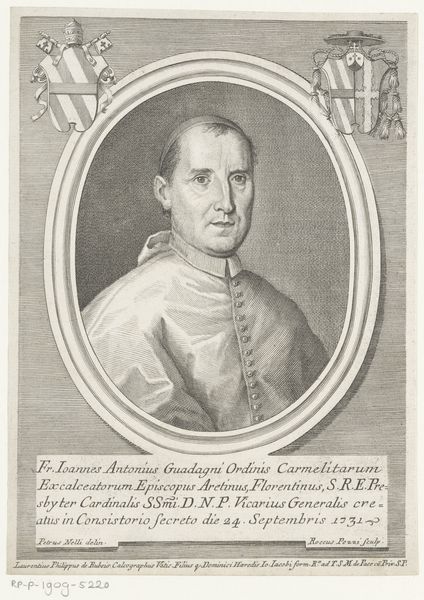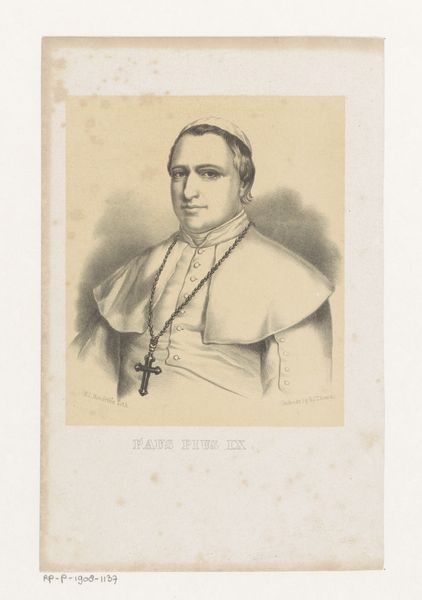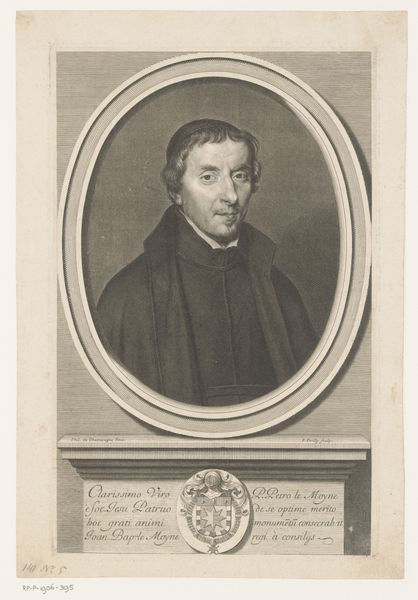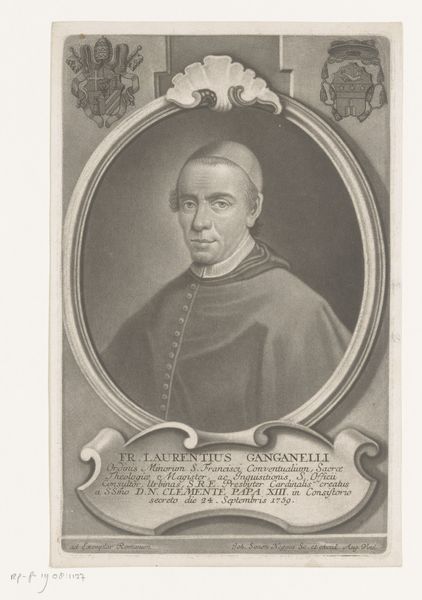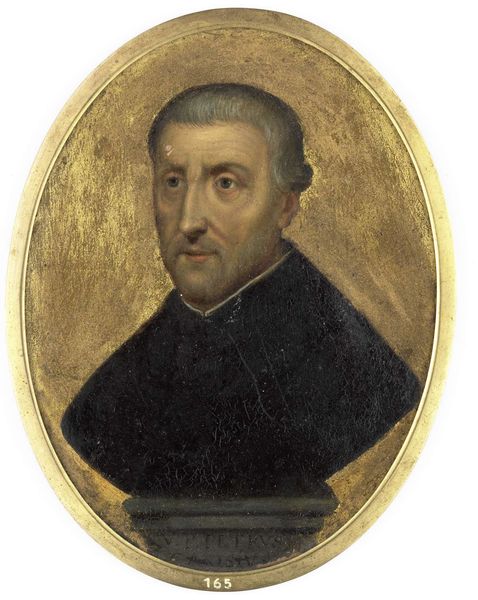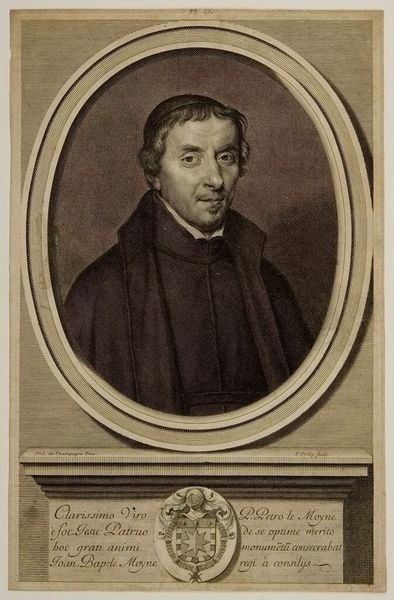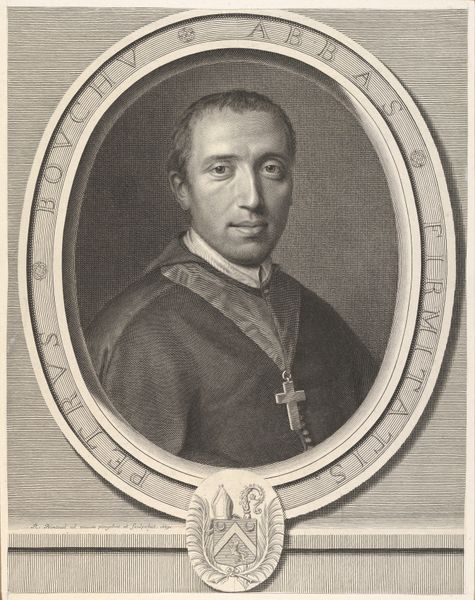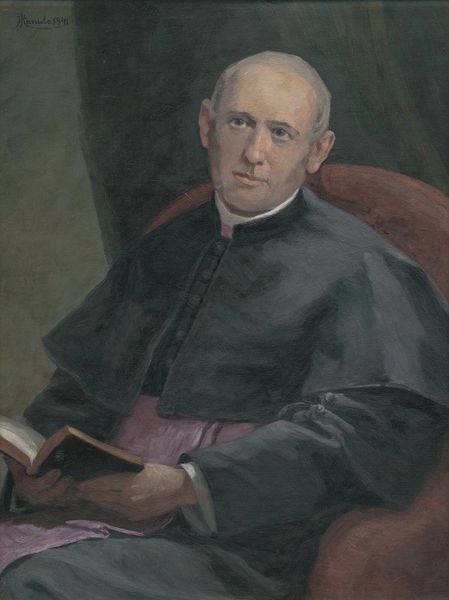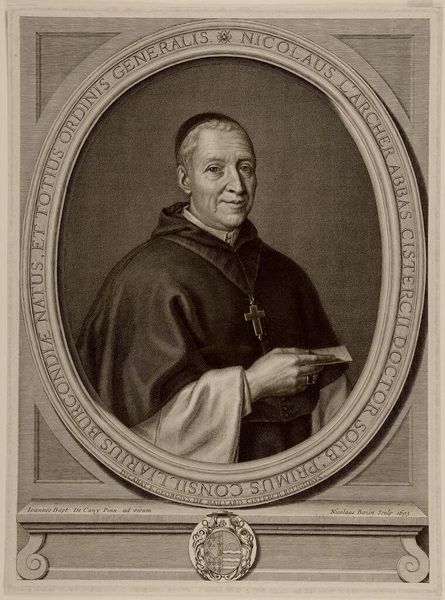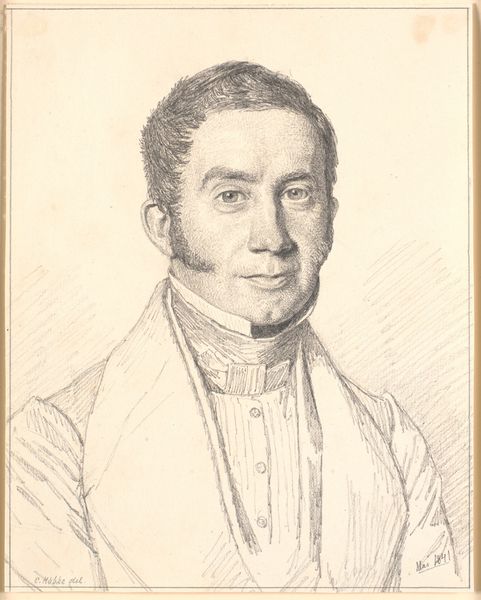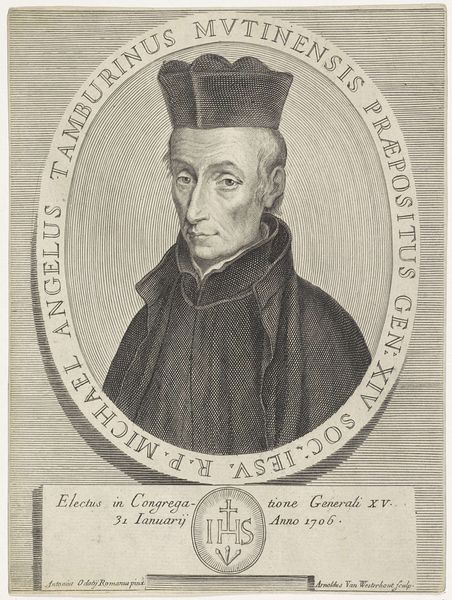
painting
#
portrait
#
painting
#
romanticism
#
academic-art
Dimensions: 41.3 x 46.2 cm
Copyright: Public domain
Curator: Here we have William Bouguereau's "A Portrait of Eugene Bouguereau," painted in 1850. It is currently held in a private collection. Editor: The first thing that strikes me is the stark contrast. The dark, almost severe clothing against that pale, slightly sickly complexion, all framed within this soft, blurred oval. Curator: The framing is quite typical of portraiture from this period. What is interesting is that the sitter's direct gaze feels confrontational but still within academic conventions of depicting character and status. As a member of the clergy, it shows how institutional power can still convey humanity. Editor: Power is such an abstract idea, here rendered through very physical means. The layers upon layers of oil paint, building up these almost imperceptible shifts in tone...that's real work, isn't it? The labour involved in portraying status! It’s worth remembering all the material concerns – pigment recipes, brushstrokes, the stretcher for the canvas, the lighting in the studio -- which come together to give this impression of power. Curator: Absolutely. It is also worth remembering the historical climate in France in the 1850s. Louis-Napoleon had only recently seized total power. Academic painting had a critical role in maintaining a status quo that presented power as virtuous. Editor: But the subject's eyes, they don't project confidence. I see a hint of vulnerability or perhaps a questioning spirit. Was he fully at ease within that status? Curator: Perhaps the very act of commissioning a portrait like this can also signify a form of social positioning or aspiration. It provided sitters such as Eugene agency to represent themselves favorably but within acceptable, almost conservative parameters. Editor: And for us today, it opens up this conversation about the creation of image and the role of representation itself in how the clergy positioned themselves within a quickly changing world. This feels so rich. Curator: Agreed, seeing how political forces and art are intertwined, each shaping and informing the other. Editor: Definitely given me a lot to consider about the weight of this picture as an object and its making, as well as the labor that went into it and who controls it.
Comments
No comments
Be the first to comment and join the conversation on the ultimate creative platform.
